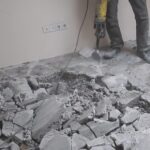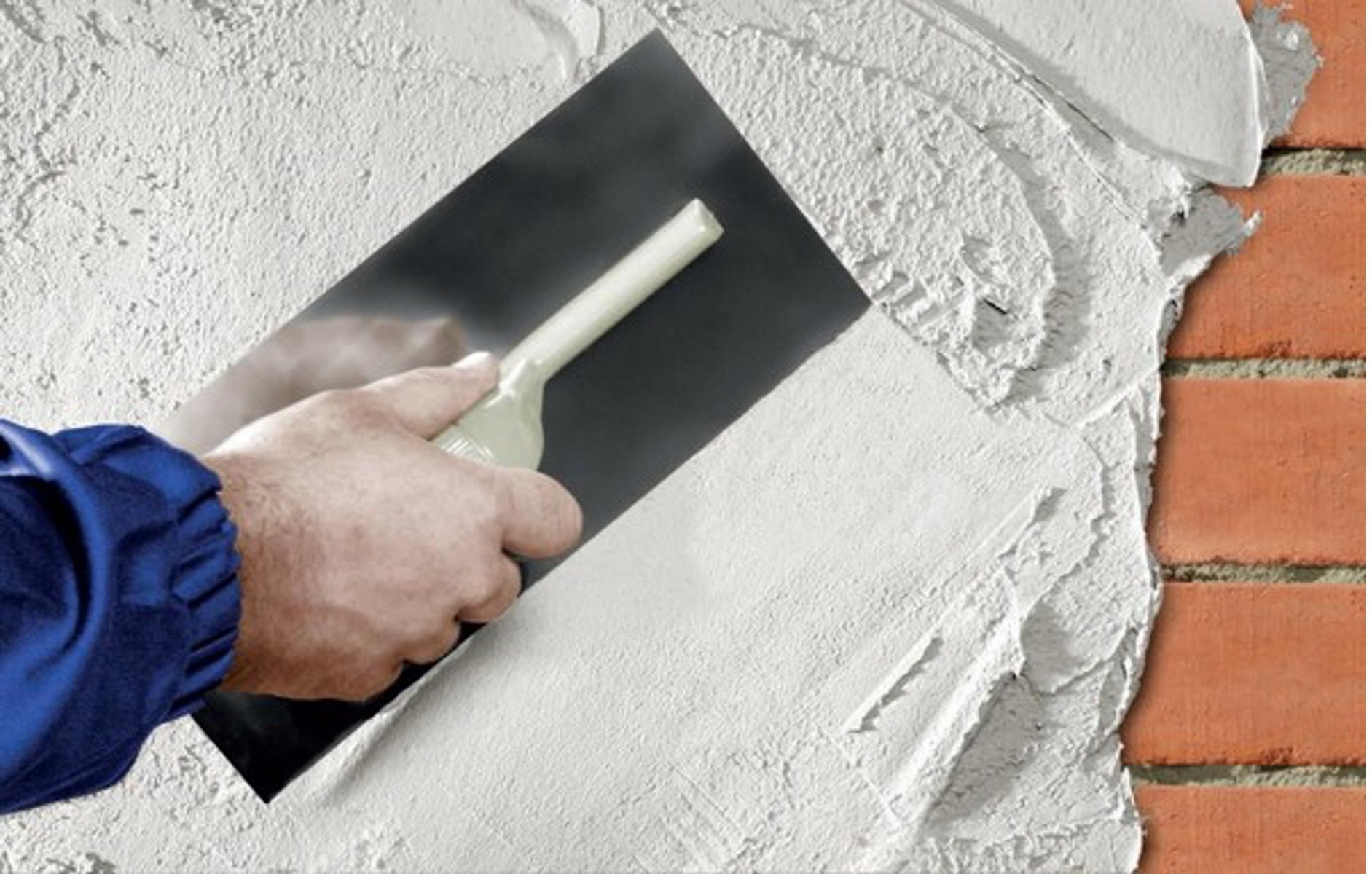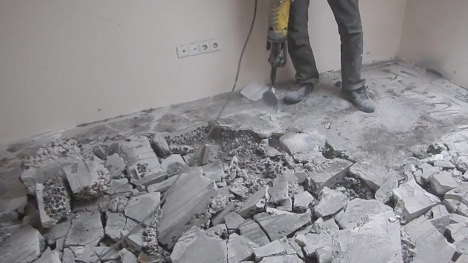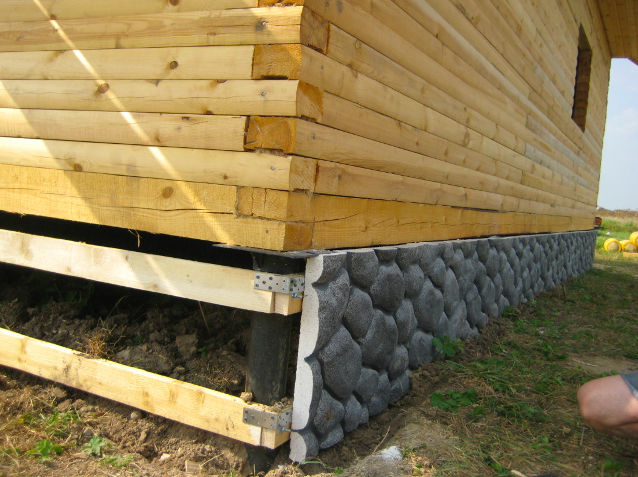Insulating the attic ceiling with your own hands: how and with what to insulate the second floor under the roof
Attic ceiling insulation is usually done with expanded polystyrene or mineral wool. Since the attic space is usually cold, the installation is done in several layers. To do this, construct a frame from a metal profile or wooden beam. How to do this is described step by step in the presented material.
The content of the article
Choice of insulation
When planning insulation of the second floor under the roof, first of all you need to decide on the material. The choice is related to the properties of a particular raw material and the climatic characteristics of the area. The most popular insulation materials that really protect well from the cold are:
- Polystyrene foam is an affordable insulation material that is light in weight. It is convenient to transport and cut into blocks of any size. However, it does not allow steam to pass through, so the room can become quite damp. If you equip a good ventilation system, this problem can be solved.
- You can also insulate the second floor under the roof with your own hands using mineral wool (its varieties are glass wool and stone wool). They are also inexpensive and reliably protect from the cold, while allowing moisture to pass through well. But if you do not make a vapor barrier on both sides, the material will quickly swell from water, evaporated in the air and will begin to quickly deteriorate.
- Also, insulation of the second floor of a wooden house can be done using polyurethane foam.And not only in the traditional way, but by spraying, which allows you to accurately apply the required amount, taking into account the characteristics of the surface. This is an effective material, but, like foam, it also does not allow moisture to pass through. Therefore, the creation of high-quality ventilation is required.
- You can insulate the second floor of a wooden house with your own hands and ecowool. It costs more, but provides the best protection from the cold, provided it is installed well. Particularly suitable for cold rooms, including the attic.
- There is also the option of insulation with a material with a reflective layer, which is made of thick foil. They are usually used in baths or saunas. Moreover, it is important to understand that this is an inferior option, but only an additional means. Therefore, when considering how to insulate an attic ceiling, it is optimal to use, for example, mineral wool and pack it in foil.
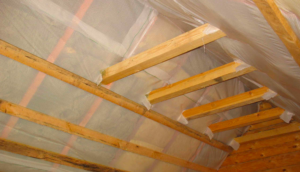
Preparation for work, materials and tools
Before you understand how to insulate the ceiling from the attic side, you need to choose a material and also become familiar with the structure of the roofing pie. It consists of several layers:
- Outside there is a roofing covering, for example, metal tiles.
- Next comes the counter-lattice and the lathing itself, which is fixed to the rafters (supporting structure).
- Under them there is vapor and waterproofing. This is an essential part of the pie, without which it will not be possible to insulate the second floor.
- Insulation, for example, mineral wool blocks, is laid between the rafters.
- Under it, i.e. Closer to the ceiling, a vapor barrier is again laid. This is due to the need to protect the material from moisture not only from the outside, but also from the inside. This is the correct way to insulate an attic floor.
- Finally, the last layer is the internal lathing, which secures the vapor barrier. Finishing materials, for example, panels for a finished ceiling, can be attached to it from the inside.
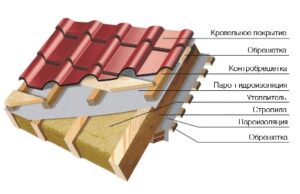
If you insulate the second floor, as shown in the diagram, there will be practically no gaps, so even at the joints there will be no heat leakage. But to attach the heat-insulating material, it is necessary to create a frame from a metal profile or wooden sheathing. To do this you will need the following materials and tools:
- the insulation itself;
- metal profiles or bars with slats for a wooden frame;
saw; - nails;
- self-tapping screws;
- hammer;
- screwdriver;
- roulette;
- sharp knife;
- polyurethane foam;
- construction stapler with staples;
- waterproofing;
- vapor barrier.
To create a frame, you can use a standard metal profile or wooden blocks. Their cross-section can be 30*40 mm or a little larger - 40*50 mm.
Step-by-step instruction
Now you need to figure out how to insulate the second floor of your dacha. The main stages of installation work are as follows:
- First, a vapor barrier is installed from the inside. A small gap for ventilation should be provided between the roof and the outer covering of the vapor barrier material. Otherwise, moisture will accumulate from the inside and penetrate into the insulation itself, destroying it.
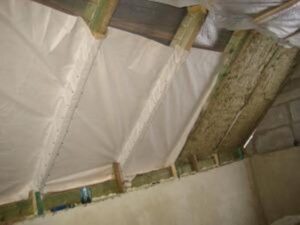
- Next, a frame made of timber or metal profile is mounted. Proceed to laying the base material. If you plan to insulate the ceiling of the second floor with a cold roof, it must be laid in at least 2 layers. Distribute as densely as possible, with joints pressed well. In this case, each seam is covered with polyurethane foam.
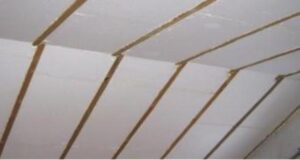
- Having figured out how to insulate the attic floor, install a vapor barrier, for example, a membrane or glassine.They overlap each other by at least 10 cm and seal with tape. It is important to make airtight connections through which air and evaporated moisture particles will not penetrate.
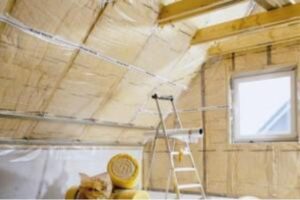
- At the final stage it is planned to finish the attic ceiling in a wooden house. To do this, you can use an external decorative coating, take plasterboard sheets or other materials as a basis.
From this review it is clear how to insulate the attic floor in a private house. If the ceiling is cold and the region has frosty winters, it is better to use expanded polystyrene or mineral wool laid in 2-3 layers. It is advisable to provide extra insulation and provide good ventilation. Thanks to this, you can create an optimal microclimate on the second floor, regardless of the season.

